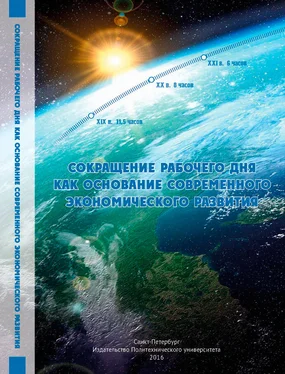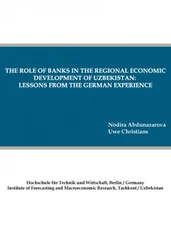Кейнс Дж.М. Экономические возможности наших внуков//Вопросы экономики. 2009. № 6. С. 65. (J.M. Keynes. Economic Possibilities for our Grandchildren//Voprosy Ekonomiki. 2009. № 6. P. 65).
Исследование McKinsey: Промышленность будущего: новая эра глобального роста и инноваций. [Электронный ресурс] // Центр гуманитарных технологий. – 2012.11.26. – Режим доступа: http :// gtmarket . ru / news /2012/11/26/5188, свободный. (McKinsey Global Institute Research: Manufacturing the Future: The Next Era of Global Growth and Innovation. [Electronic resource] // Centre for Human Technologies. – 2012.11.26. – Access mode: http://gtmarket.ru/news/2012/11/26/5188, free).
Summarized and calculated by the authors on the basis of statistics of the Organization for Economic Co-operation and Development (OECD). – Electronic resource. – Access mode: http://www.oecd.org/, free (date of request 10.02.2015).
Note. The data on Canada are based on the latest version of STAN including assessments by ISIC Rev.2 SNA68; the data on the Netherlands, Norway, Slovenia are based on Rev.4.
Note. Tempos of changing for Austria, Estonia, Greece, Germany, Denmark, Finland, Italy are calculated for the period 2005-2009; for the Czech Republic, Canada tempos of changing are calculated for the period 2005-2008.
Lawless Martina, Whelan Karl T. Understanding the Dynamics of Labour Shares and Inflation / Martina Lawless, Karl T. Whelan // Journal of Macroeconomics. 2011. № 33. P. 132.
Статистические данные Статистической службы Европейского союза (Евростат). – Электронный ресурс – Режим доступа: http :// ec . europa . eu / eurostat / data / database, дата обращения 14.02.2015. (Statistics of the European Statistical Office (Eurostat) – Electronic resource – Access mode: http://ec.europa.eu/eurostat/data/database, date of request 14.02.2015).
Статистические данные Статистической службы Европейского союза (Евростат). – Электронный ресурс – Режим доступа: http :// ec . europa . eu / eurostat / data / database, дата обращения 14.02.2015. (Statistics of the European Statistical Office (Eurostat) – Electronic resource – Access mode: http://ec.europa.eu/eurostat/data/database, date of request 14.02.2015).
Статистические данные Организации экономического сотрудничества и развития (ОЭСР). – Электронный ресурс. – Режим доступа: http :// www . oecd . org /, свободный (дата обращения 10.02.2015). (Statistics of the Organization for Economic Co-operation and Development (OECD). – Electronic resource. – Access mode: http://www.oecd.org/, free (date of request 10.02.2015).
Статистические данные Организации экономического сотрудничества и развития (ОЭСР). – Электронный ресурс. – Режим доступа: http :// www . oecd . org /, дата обращения 14.02.2015. (Statistics of the Organization for Economic Co-operation and Development (OECD). – Electronic resource. – Access mode: http://www.oecd.org/, date of request 14.02.2015.
Summarized and calculated on the basis of statistics of the Organization for Economic Co-operation and Development (OECD). – Electronic resource. – Access mode: http://www.oecd.org/, date of request 14.02.2015.
Note. Tempos of changing for France, Italy, Sweden are calculated for the period 2005-2008.
Note. Data on Greece and Korea are calculated on the basis of STAN 2.
Статистические данные Организации экономического сотрудничества и развития (ОЭСР). – Электронный ресурс. – Режим доступа: http :// www . oecd . org /, дата обращения 14.02.2015. (Statistics of the Organization for Economic Co-operation and Development (OECD). – Electronic resource. – Access mode: http://www.oecd.org/, date of request 14.02.2015.
Calculated on the basis of statistics of the Organization for Economic Co-operation and Development (OECD). – Electronic resource. – Access mode: http://www.oecd.org/, date of request 14.02.2015.
Coote A., Franklin J., Simms A. 21 Hours: Why a Shorter Working Week Can Help Us to Flourish in 21 stCentury//The New Economic Foundation. 2010. February. P. 10.
Is Full-Time Work Bad for our Brains? - https://www.bbc.com/worklife/article/20160714-is-full-time-work-bad-for-our-brains
Source: the data of the OECD. http :// dx . doi . org /10.1787/888932907205(date of request 15.01.2014).
Ельмеев В.Я. Социальная экономия труда: общие основы политической экономии. – СПб.: Изд-во С.-Петерб. ун-та, 2007. С. 411. (Yelmeev V.Y. Social Saving of Labour: General Fundamentals of Political Economy. – SPb.: The St. Petersburg University Publishing House, 2007. P. 411).
Here and below when speaking about annual working time, we use the data of the Organization for Economic Co-operation and Development (Data extracted on 18 Jan 2013 13:42 UTC (GMT) from OECD.Stat) and also the data given in the article: Bosch, G. and Lehndorff, S. Working-Time Reduction and Employment: Experiences in Europe and Economic Policy Recommendations//Cambridge Journal of Economics. 2001. 25. P. 220.
Here and below when speaking about the dynamics of working week duration, we use the data of the International Labour Organization. http :// laboursta . ilo . orgDate of request: 07.02.2013.
Леонтьев В. Экономическое эссе. Теория, исследования, факты и политика/Пер. с англ. – М.: Политиздат, 1990. С. 195. (Leontief W. Essays in Economics: Theories, Theorizing, Facts and Policies. – M.: Politizdat, 1990. P. 195.
Кейнс Дж.М. Экономические возможности наших внуков//Вопросы экономики. 2009. № 6. С. 60-67. (J.M. Keynes. Economic Possibilities for our Grandchildren//Voprosy Ekonomiki. 2009. № 6. P. 60-67).
Savage M., Cunningham N., Devine Fiona and other. Social Class in the 21 stCentury. A Pelican Introduction. 2015. P. 174.
Source: the data of the OECD. http://www.oecd.org/fr/retraites/panoramadespensions.htm(date of request 17.01.2014).
Bowman, J.R. Capitalisms Compared: Welfare, Work, and Business. CQ Press. Los Angeles. 2013. P. 127.
Золотов, А.В. Сокращение рабочего времени как фактор укрепления здоровья/А.В. Золотов, П.В. Мухин//Здоровье – основа человеческого потенциала: проблемы и пути их решения. 2014. Т. 9. № 1. С. 54-58. (Zolotov, A.V. Working Time Reduction as a Factor of Health Promotion/A.V. Zolotov, P.V. Mukhin//Health is the Basis of Human Potential: Problems and Ways of Solving them. 2014. V. 9. № 1. P. 54-58).












